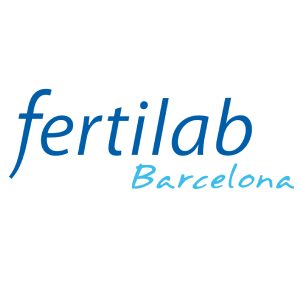In vitro fertilization with egg donation
Within the realm of assisted reproductive techniques (or ART), egg donation (or oocyte donation) is a procedure that’s scientifically more accurately referred to as heterologous fertilization with egg donation. Through this medical procedure, a couple facing fertility issues can have a child thanks to the oocytes of a donor.
This is the counterpart to semen donation. In this case, the female oocytes are used as external gametes to the couple, hence the term “heterologous fertilization”. One of the two gametes is external to the couple, while the other is internal; in this case, the internal gamete to the couple is the male semen. The oocytes are harvested from the donor through a surgical procedure called follicular puncture or retrieval.
After in vitro fertilization, the embryo is implanted in the uterus of the woman of the couple (which is suitably prepared with specific drugs administered either orally, transdermally, or vaginally) and pregnancy is initiated. The donor must be fully aware of what she is doing and must willingly donate her eggs, with the purpose and desire to enable a couple to have a child. To ensure her optimal general health status, she must also undergo certain specific tests.
Índice de contenidos
Why resort to egg donation and use the oocytes of another woman
There are several reasons to resort to egg donation. The main one is undoubtedly a couple’s difficulty in conceiving and achieving a pregnancy. One factor that greatly affects a woman’s fertility is age. After the age of 35, fertility gradually decreases, while after 44, the chances of getting pregnant and then giving birth to a healthy child decrease significantly.
Another reason is low ovarian reserve, which leads to poor oocyte production. As a result, even with ovarian stimulation for self-donated assisted reproduction, the chances of obtaining oocytes and starting a pregnancy are low. Past surgical procedures, chemotherapy treatments, or tumors that have irradiated in the pelvis could also cause a reduction in oocyte production due to total or partial damage to the ovaries; repeated failures of assisted reproductive technology are a further indication to proceed with egg donation.
Sometimes, there is no plausible explanation for continuous assisted reproductive technology failures, therefore, there may be hidden damage to the quality of the oocytes. In some cases, it may be necessary to replace not only the oocytes but also the sperm. Early menopause (either surgical or genetic) leads to a cessation of oocyte production, hence the recommendation to use the oocytes of a donor. Among the rarer causes in this regard, we can also find genetic or infectious abnormalities and numerous repeated miscarriages.
Egg Donation in Spain, what does the law say? Egg donation in Spain is regulated by a series of very favourable laws that make it a popular destination for couples and individuals seeking to become parents through in vitro fertilization (IVF) with egg donation. The Spanish assisted reproduction law (Ley 14/2006) allows egg donation, and is very open and inclusive compared to other countries. There are no restrictions based on sexual orientation or marital status, which means that heterosexual couples, same-sex couples, and single individuals can all access IVF treatments with egg donation in Spain.
Egg donation in Spain is anonymous by law, so the donor will have no legal right or obligation towards any children born from the process. Personal information about the donor will also be kept confidential and will not be disclosed to the recipients. Fertilab is one of the leading clinics in Spain, known for its excellence and patient-centered approach. They offer a wide range of fertility treatments, including egg donation, with a team of highly qualified experts and the use of the most modern technologies.
Fertilab is committed to making your journey towards parenthood as simple and comfortable as possible. They offer a comprehensive service that goes beyond medical treatment, assisting you with logistics such as travel, accommodation and translation, making the experience less stressful.
Furthermore, the rates for egg donation treatments in Spain, including at the Fertilab clinic, are generally more affordable compared to other countries, such as the UK and the US, making Spain an attractive choice from an economic standpoint.
If you are British or American citizens looking for egg donation options, Spain, and particularly Fertilab, offers an excellent, welcoming, and accessible option. Remember, your dream of becoming parents can become a reality and Fertilab is here to help you achieve it.
What are the requirements for the donor and how is she selected
To ensure the highest quality of oocytes to be implanted in the recipient, thus achieving a pregnancy, donors must meet certain fundamental requirements to be subjected to egg retrieval. The first factor to consider, as we understood earlier, is age.
The donor’s age must be between 20 and 35 years and her ovulatory function must be normal. She must also be in excellent physical and psychological health and should not have malformations or genetic, hereditary, or congenital diseases. The donor must also agree to undergo a gynecological examination to assess her fertility and blood tests. The donation then takes place in a completely anonymous and voluntary manner.
When selecting an egg donor, several factors are evaluated (in addition to those already listed above). In fact, it is advisable to carry out a procedure called “matching”, as established by the guidelines for heterologous fertilization. First of all, the blood group of the donor and the recipient couple should be compatible. In addition, the same characteristics related to ethnicity, skin color, and other similarity factors with the couple should be ensured, in order to favor the family integration of the newborn.
How the mother-child bond is created after egg donation
Some women are reluctant to undergo egg donation procedures because it has a very strong emotional impact on them and they fear they will not be able to recognize and accept this child as their own. In reality, assisted fertilization centers try in every way to ensure the best compatibility between the characteristics of the donor’s eggs and those of the recipient couple.
By law, however, the couple cannot choose the characteristics of the donor, but they are assured compatibility with regard to: blood group, height, type and color of hair, color of eyes, ethnicity, nationality, and complexion. Some mathematical procedures manage to reconstruct the face of the donor and the recipient to verify their similarities (this without sending real photos, always in protection of privacy and anonymity).
Moreover, in humans, there are not only genetic variables, but also so-called “epigenetic” ones. A person’s genes can be “activated” or “deactivated” based on the context in which they are found, and this is what also happens during pregnancy. Therefore, during the months of gestation, the mother will be able to “modify” her baby with her own lifestyle and feelings, and feel him/her increasingly close and akin to her.
How is egg donation done: the stages of the procedure
To perform the IVF technique with egg donation, two fundamental procedures must be performed: the collection of eggs from the donor and the preparation of the uterus and endometrium of the recipient.
As already mentioned, in each cycle, a woman generally produces only one egg, therefore, the donor is subjected to controlled ovarian stimulation to obtain more eggs. Hormones are administered to her (the same ones that control the “classic” menstrual cycle) in higher doses, in order to mature more eggs. Generally, about 10 or 12 eggs can be obtained. This process takes about 10/12 days.
During this period, the donor is monitored ultrasonographically, in order to verify the number and size of the follicles. Once this is done, a final dose of hormones is administered that leads to the complete maturation of the eggs.
The eggs can then be collected through ultrasound-guided transvaginal aspiration. While the donor is being prepared for egg collection, the recipient’s uterus is also prepared for implantation. If the woman still has her menstrual cycle (if she is menopausal, there is no need), her ovarian activity must be stopped.
This is usually done using contraceptives or a dose of GnRH analogues.
Then, the endometrium can be prepared to receive the embryo by administering oral drugs or transdermal patches. The recipient is also monitored ultrasonographically, to check the size of the endometrium. This phase lasts about two weeks.
When the eggs are ready, they are fertilized with the male partner’s sperm. The sperm is also carefully prepared in the lab. Through some techniques (one of them is MACS), the sperm with the highest fertilization potential are selected. The sperm is then injected into the eggs (one live sperm is inserted into each egg) and it is checked whether fertilization has occurred. About 2/6 days after this procedure, the embryos are transferred to the recipient’s uterus through an always ultrasound-guided method.
Rest is recommended on the same day and the day after, then you can resume daily activities, being careful with violent efforts and sports. To confirm pregnancy, a beta hCG test or urine test can be done 12/14 days after the implantation procedure. After a further 15 days, an ultrasound is performed to verify the presence of the gestational sac and the heartbeat.
Heterologous fertilization with egg donation: screening tests
Not only donors, to verify their suitability, but also the receiving couple must undergo careful screening before proceeding with assisted reproduction.
The female partner must undergo: serological tests (hepatitis B and C, HIV, and TPHA-VDRL), blood tests (complete blood count, transaminase, glucose, bilirubin), blood coagulation tests, thyroid tests (mainly TSH and in some cases also FT3 and FT4), vitamin D, electrophoresis to possibly highlight Mediterranean anemia, ECG, pap smear, breast ultrasound and vaginal swab for the search of certain pathogens.
The male partner must undergo similar tests (serological, blood and electrophoresis) plus a complete sperm culture, always for the search for the same pathogens, and genetic tests for karyotype and cystic fibrosis.
Success rates of egg donation: in the first cycle and subsequent ones
What matters to all couples who decide to undergo heterologous in vitro fertilization with egg donation is obviously to succeed in their intent: to become parents and bring home a baby.
Given that this technique uses carefully selected external embryos, the chances of achieving a pregnancy, already in the first cycle of treatment, are quite high. This is because there are no factors that can influence fertility and conception.
The average gestation rate is about 60%, with pregnancy verified by ultrasound and with the presence of the embryo’s heartbeat. This is already only in the first treatment cycle. The percentage rises to over 90% after three cycles, in which all the embryos produced during each cycle are used and in several transfers.
Potential risks and costs of egg donation
The egg donation procedure poses no risks to the recipient. Complications may arise, but these are not due to the procedure itself, but may depend on the woman’s age. Also for the donor there are no complications, except for some discomfort like abdominal cramps (similar to menstrual cramps) and a bit of vaginal bleeding, due to the needle. Even she, however, is advised to rest the day after the procedure.
As for the prices of egg donation, Fertilab proposes a price starting from € 5,145.00.
It also proposes Baby Ferti Genetic, its guaranteed pregnancy program with egg donation.
















